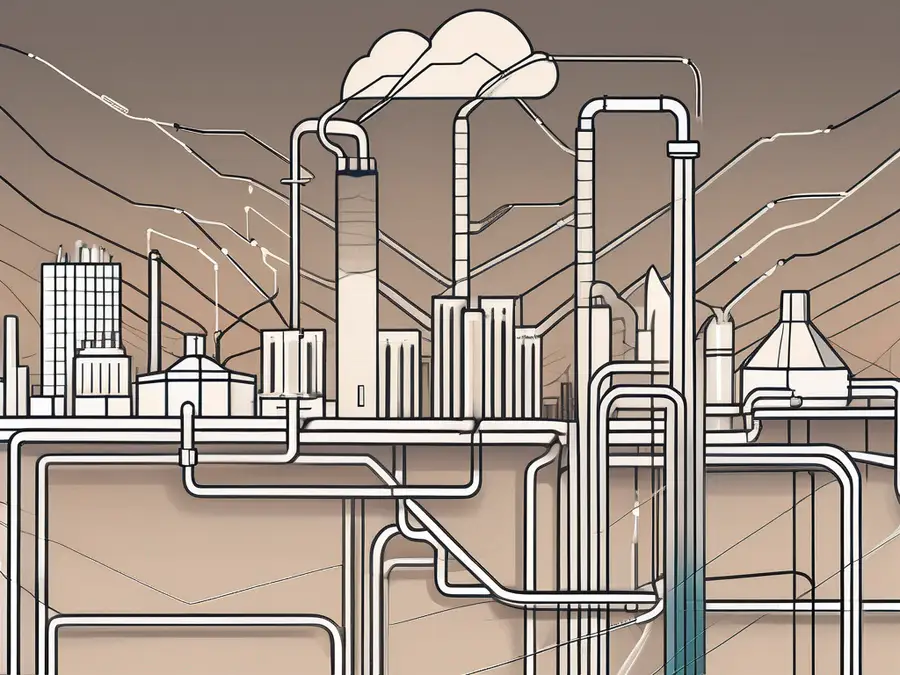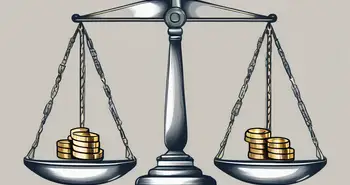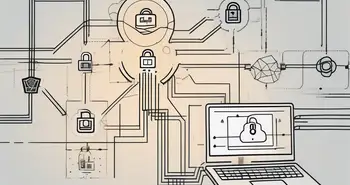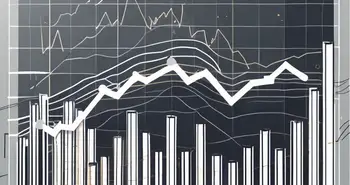Understanding Gas Fees on the Ethereum Network

As an expert in the field, I want to provide a clear and concise understanding of gas fees on the Ethereum network. Gas fees play a vital role in facilitating transactions, affecting network speed, and influencing the overall user experience. In this article, we will explore the definition, purpose, calculation, and management of gas fees. We will also delve into how gas fees relate to smart contracts, Ethereum upgrades, and explore the various tools and strategies available for estimating and reducing gas fees.
What are Gas Fees?
Gas fees are an essential aspect of the Ethereum network that ensures the smooth execution of transactions and smart contracts. When initiating a transaction or executing a smart contract on the Ethereum blockchain, users need to pay a certain amount of gas fees. These fees are paid to miners, who validate and process the transactions, ensuring the security and integrity of the network.
Definition and Purpose of Gas Fees
Gas fees are a unit of measurement on the Ethereum network that quantifies the computational complexity and resources required to execute a transaction or smart contract. Each operation, such as transferring funds or executing a function, consumes a specific amount of gas. Gas fees incentivize miners to prioritize transactions with higher fees, making the network more efficient by discouraging spam or malicious activities.
How Gas Fees Facilitate Transactions
Gas fees ensure the prioritization and timely processing of transactions within the Ethereum network. When submitting a transaction, users set a gas price, which determines the amount of Ether (ETH) they are willing to pay per unit of gas. Miners then validate and include transactions in blocks based on their gas price. Higher gas fees increase the chances of a transaction being included in the next block, effectively facilitating faster confirmation times and ensuring the smooth flow of transactions.
It's important to note that gas fees can vary depending on network congestion and the complexity of the transaction. During times of high network activity, such as when there is a surge in decentralized finance (DeFi) activity or a popular non-fungible token (NFT) drop, gas fees can increase significantly. Users may need to adjust their gas prices to compete with other transactions and ensure timely processing.
Gas Limits and Estimation
In addition to setting a gas price, users also need to specify a gas limit when sending transactions. The gas limit represents the maximum amount of gas a user is willing to spend on a transaction. Setting an appropriate gas limit is crucial to prevent transactions from running out of gas mid-execution, which can result in a failed transaction and wasted fees. To help users estimate the required gas for a transaction, Ethereum wallets and platforms often provide gas estimation tools based on historical data and network conditions.
The Role of Gas Fees in the Ethereum Network
Gas fees have a significant impact on the functionality and scalability of the Ethereum network. Understanding their importance is crucial for developers, users, and anyone involved with Ethereum-based applications.
Gas Fees and Smart Contracts
Smart contracts are self-executing agreements written in code on the Ethereum blockchain. Executing functions within smart contracts requires gas, the cost of which is determined by the complexity of the operation. Gas fees associated with smart contracts increase proportionally with the complexity and computational resources needed for execution.
For developers, optimizing gas usage becomes essential in building cost-effective and efficient smart contracts. By carefully designing and refactoring the code, developers can reduce gas costs, making their applications more accessible and economically viable for users.
Impact of Gas Fees on Network Speed
Gas fees directly affect the speed and responsiveness of the Ethereum network. During periods of high demand and congestion, gas fees tend to increase significantly. This increase in fees discourages users from submitting unnecessary or low-priority transactions, allowing the network to maintain a reasonable transaction throughput.
However, excessive gas fees can also lead to challenges, as they may price out smaller users or make certain types of transactions economically unfeasible. This issue has sparked efforts to explore scalability solutions and improve the scalability of the Ethereum network, ensuring a seamless experience for all users.
Calculation of Gas Fees
The calculation of gas fees involves understanding and considering two primary factors: gas price and gas limit. These factors determine the overall cost of a transaction or smart contract execution.
Understanding Gas Price and Gas Limit
Gas price represents the amount of Ether (ETH) a user is willing to pay per unit of gas. It is important to set an appropriate gas price that strikes a balance between transaction speed and cost. A higher gas price increases the chances of a transaction being included in the next block but comes at a higher cost.
Gas limit refers to the maximum amount of gas a user is willing to consume for a transaction or smart contract execution. A higher gas limit allows for more complex operations but also requires more computational resources and incurs higher fees.
Factors Influencing Gas Fees
Several factors influence gas fees on the Ethereum network:
- Network congestion: When the number of pending transactions exceeds the network's capacity, gas fees tend to rise.
- Gas price trends: Gas prices can fluctuate based on market dynamics and user demand.
- Gas limit optimization: Developers can optimize their smart contracts by reducing the amount of gas required for their operations, effectively reducing gas fees.
Gas Fees and Ethereum Upgrades
The Ethereum network is continuously evolving and striving to improve its scalability and efficiency. Upcoming upgrades aim to tackle the challenges posed by high gas fees and provide solutions for a more seamless user experience.
Ethereum 2.0 and its Impact on Gas Fees
Ethereum 2.0, also known as Eth2 or Serenity, is a major upgrade to the Ethereum network that aims to improve scalability and reduce gas fees. The migration from the current proof-of-work (PoW) consensus mechanism to a proof-of-stake (PoS) model will enhance network efficiency and reduce the computational resources required for transaction validation.
By reducing the dependency on energy-intensive mining, Ethereum 2.0 aims to lower gas fees and make the network more accessible to users with varying levels of resources.
Layer 2 Solutions and Gas Fees
Layer 2 solutions, such as state channels and sidechains, offer additional scalability and throughput to the Ethereum network. These solutions allow users to perform transactions off-chain, reducing the burden on the main Ethereum network and minimizing gas fees.
Through the utilization of layer 2 solutions, users can enjoy faster and cheaper transactions while still benefiting from the security and decentralization of the Ethereum network.
Managing Gas Fees
Managing gas fees effectively is fundamental for users and developers looking to navigate the Ethereum network efficiently.
Tools for Estimating Gas Fees
Several tools exist to help users estimate gas fees before submitting transactions. These tools analyze network conditions and provide recommendations for optimal gas prices based on expected transaction confirmation times. By leveraging these tools, users can make informed decisions to optimize their gas fees.
Strategies for Reducing Gas Fees
Developers and users can employ various strategies to reduce gas fees:
- Gas optimization techniques: Developers can optimize their smart contracts by reducing logic complexity and removing unnecessary operations, ultimately minimizing gas usage.
- Batching transactions: Users can combine multiple transactions into a single transaction, effectively reducing gas fees by utilizing shared computational resources.
- Choosing optimal gas prices: Users can monitor gas price trends and select an appropriate gas price to balance speed and cost.
By adopting these strategies and staying informed about gas fee dynamics, users can minimize their costs and improve their overall Ethereum network experience.
FAQ
What are gas fees on the Ethereum network?
Gas fees are the charges users pay for executing transactions and smart contracts on the Ethereum network. These fees compensate miners for their computational work and secure the Ethereum blockchain.
How do gas fees facilitate transactions?
Gas fees incentivize miners to process and prioritize transactions. Users set a gas price, which determines the fee they are willing to pay, increasing the chances of their transactions being included in blocks. Higher gas fees result in faster confirmation times and smoother transaction flow.
How can gas fees be reduced?
Gas fees can be reduced by optimizing smart contracts to minimize gas usage, batching transactions to share computational resources, and carefully selecting optimal gas prices based on network conditions.
How do Ethereum upgrades impact gas fees?
Ethereum upgrades, such as Ethereum 2.0 and layer 2 solutions, aim to improve scalability and reduce gas fees. The migration to a proof-of-stake consensus mechanism and the utilization of off-chain solutions can significantly decrease gas fees and enhance the overall user experience on the Ethereum network.
As an expert in gas fees on the Ethereum network, I highly recommend users and developers familiarize themselves with gas fee dynamics, explore optimization strategies, and stay abreast of ongoing Ethereum upgrades. Understanding gas fees is key to maximizing the efficiency, usability, and cost-effectiveness of the Ethereum network.
Ready to take your Ethereum trading to the next level without the burden of gas fees? Discover Morpher.com, where the future of investing is not just a concept, but a reality. With our zero-fee structure and infinite liquidity, you can trade Ethereum and a multitude of other assets seamlessly. Whether you're interested in fractional investing, short selling without interest fees, or leveraging up to 10x, Morpher offers a unique trading experience built on the Ethereum blockchain. Sign up now to enjoy the benefits of our non-custodial Morpher Wallet and claim your Free Sign Up Bonus. Embrace the innovation of blockchain-based trading with Morpher and transform your investment journey today.

Disclaimer: All investments involve risk, and the past performance of a security, industry, sector, market, financial product, trading strategy, or individual’s trading does not guarantee future results or returns. Investors are fully responsible for any investment decisions they make. Such decisions should be based solely on an evaluation of their financial circumstances, investment objectives, risk tolerance, and liquidity needs. This post does not constitute investment advice.

Painless trading for everyone
Hundreds of markets all in one place - Apple, Bitcoin, Gold, Watches, NFTs, Sneakers and so much more.

Painless trading for everyone
Hundreds of markets all in one place - Apple, Bitcoin, Gold, Watches, NFTs, Sneakers and so much more.









